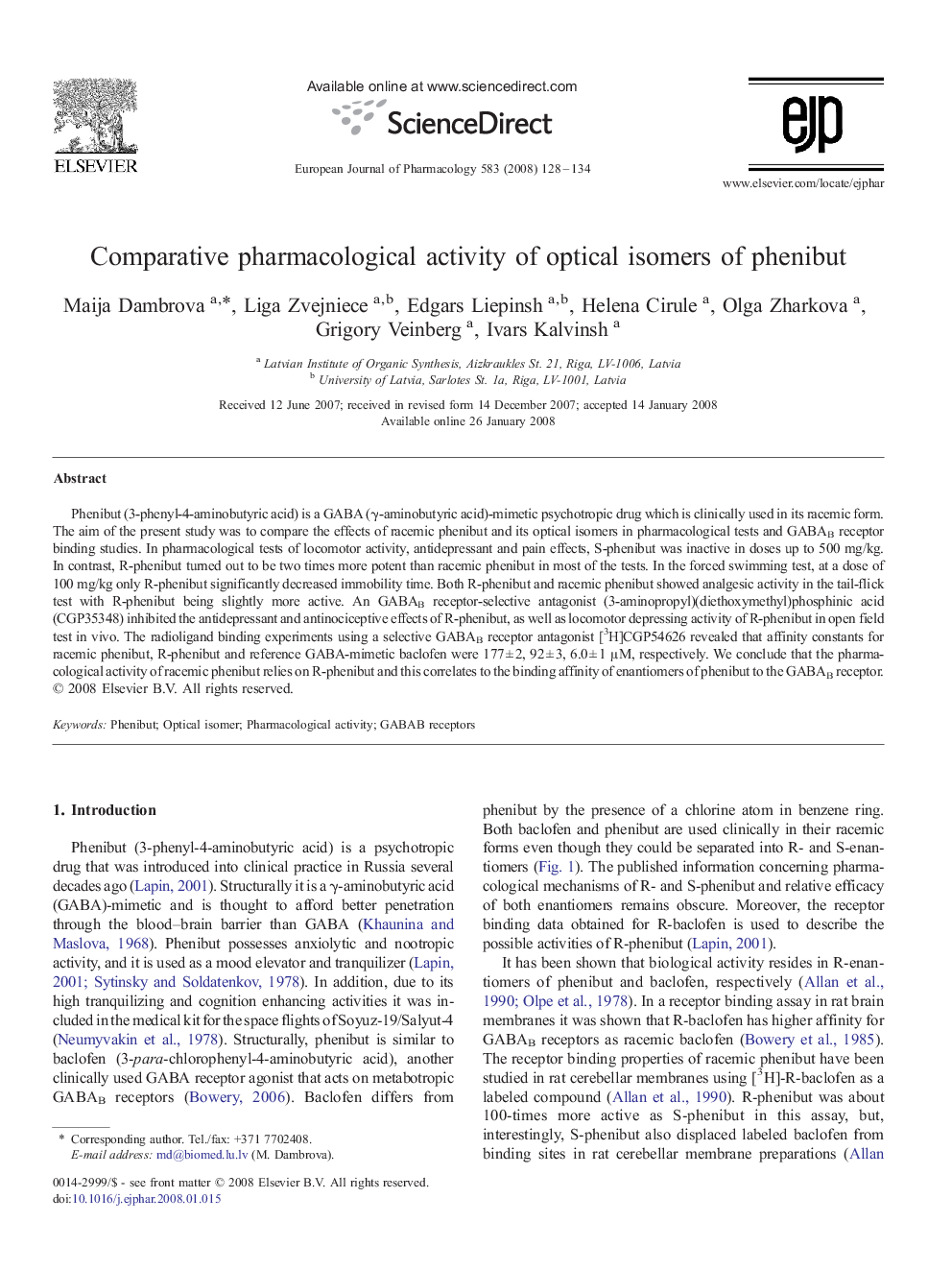| Article ID | Journal | Published Year | Pages | File Type |
|---|---|---|---|---|
| 2535303 | European Journal of Pharmacology | 2008 | 7 Pages |
Abstract
Phenibut (3-phenyl-4-aminobutyric acid) is a GABA (γ-aminobutyric acid)-mimetic psychotropic drug which is clinically used in its racemic form. The aim of the present study was to compare the effects of racemic phenibut and its optical isomers in pharmacological tests and GABAB receptor binding studies. In pharmacological tests of locomotor activity, antidepressant and pain effects, S-phenibut was inactive in doses up to 500 mg/kg. In contrast, R-phenibut turned out to be two times more potent than racemic phenibut in most of the tests. In the forced swimming test, at a dose of 100 mg/kg only R-phenibut significantly decreased immobility time. Both R-phenibut and racemic phenibut showed analgesic activity in the tail-flick test with R-phenibut being slightly more active. An GABAB receptor-selective antagonist (3-aminopropyl)(diethoxymethyl)phosphinic acid (CGP35348) inhibited the antidepressant and antinociceptive effects of R-phenibut, as well as locomotor depressing activity of R-phenibut in open field test in vivo. The radioligand binding experiments using a selective GABAB receptor antagonist [3H]CGP54626 revealed that affinity constants for racemic phenibut, R-phenibut and reference GABA-mimetic baclofen were 177 ± 2, 92 ± 3, 6.0 ± 1 μM, respectively. We conclude that the pharmacological activity of racemic phenibut relies on R-phenibut and this correlates to the binding affinity of enantiomers of phenibut to the GABAB receptor.
Related Topics
Life Sciences
Neuroscience
Cellular and Molecular Neuroscience
Authors
Maija Dambrova, Liga Zvejniece, Edgars Liepinsh, Helena Cirule, Olga Zharkova, Grigory Veinberg, Ivars Kalvinsh,
